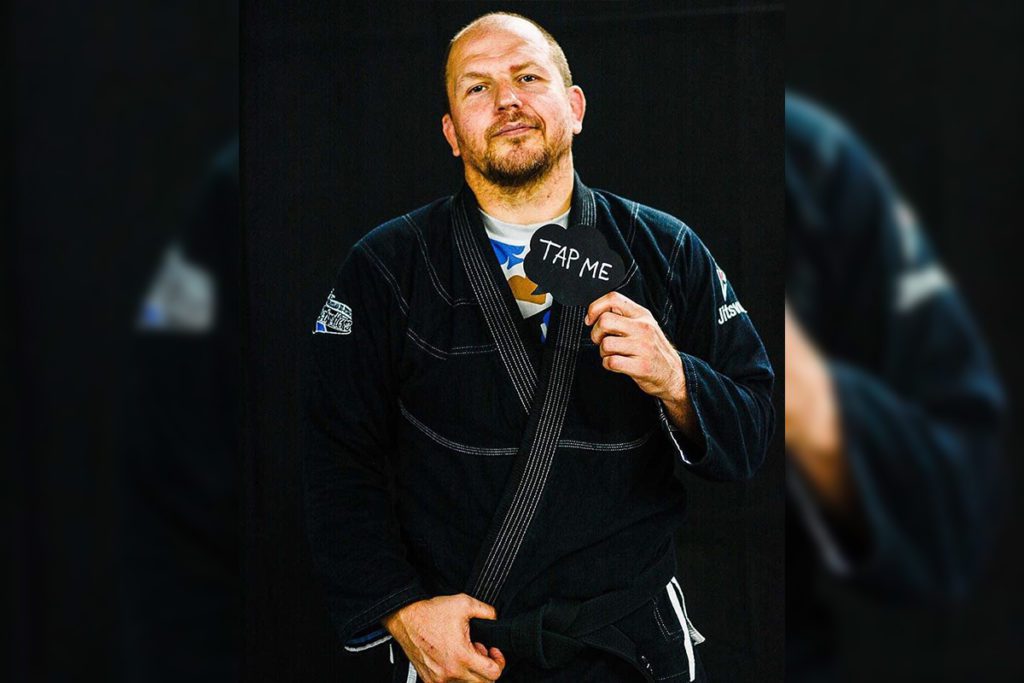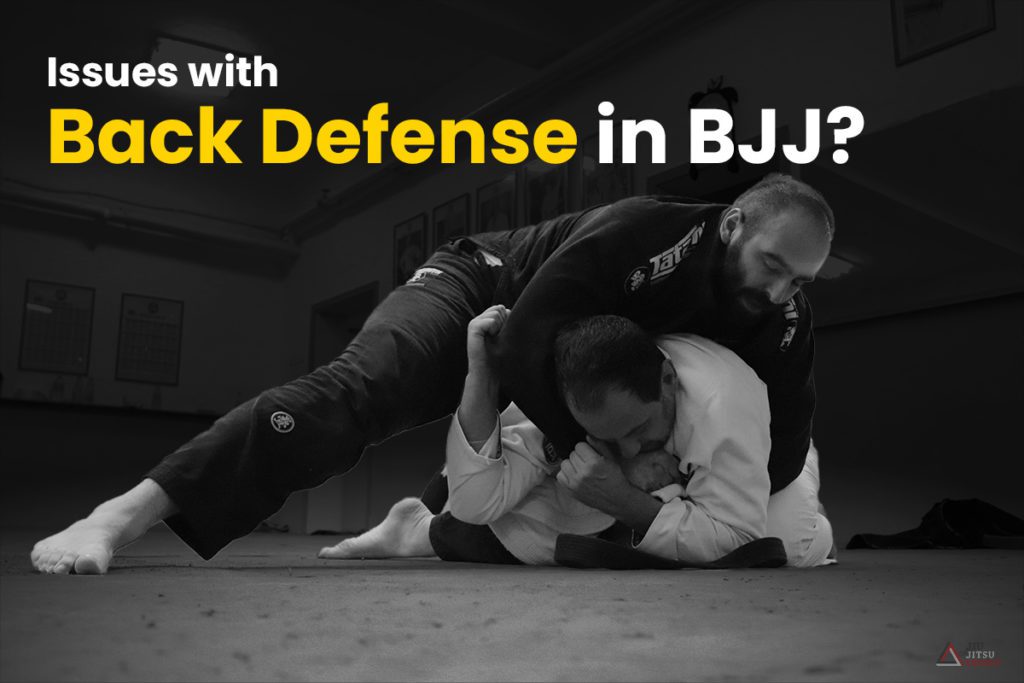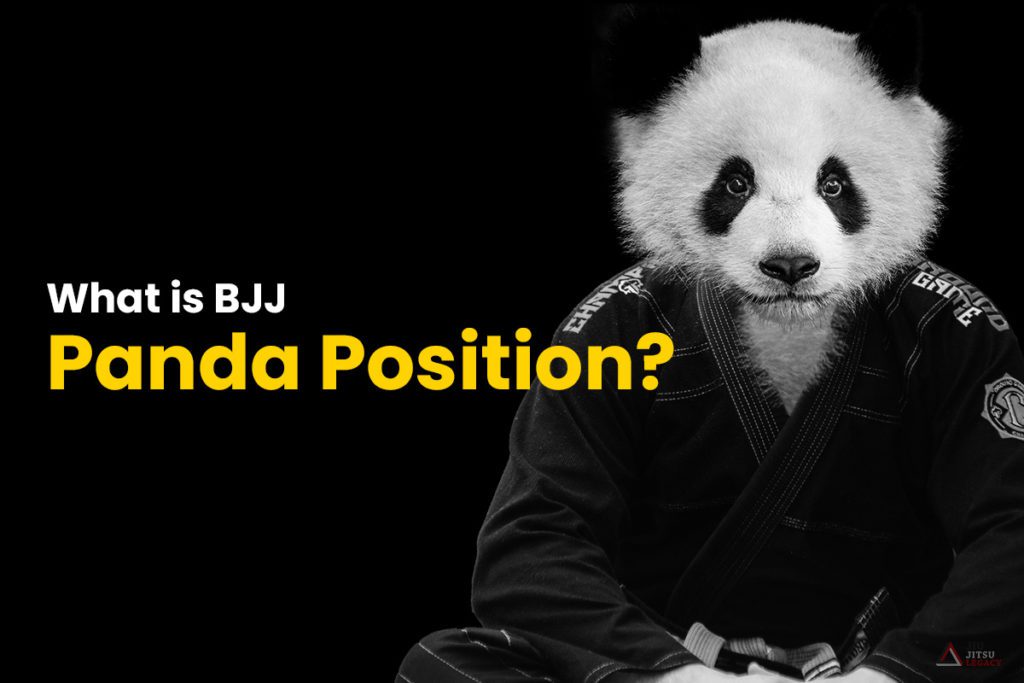What is the most annoying thing you can do in Brazilian Jiu Jitsu? How about giving your back away to people and still denying them any opportunity to choke you or even get points for being behind you?
What if I told you that this is not just possible, but pretty easy to accomplish as well? All you need is to take a look at the Panda Jiu Jitsu position and Priit Mihkelson’s Defensive BJJ system. Allow me to present the BJJ Panda position.
Become Annoying Before You Become Dangerous
I like to start off my new students with a solid base of defense before I start teaching them passes, sweeps and submissions. The idea is that as long as they can stay safe, they can remain calm, and if they are calm under pressure when attacked with passes, sweeps, submissions, or pressure, then they can eventually turn the tables.
I have felt first-hand how annoying it can be when you can’t do anything to somebody in BJJ. Imagine training Jiu Jitsu for nearly a decade, having a solid level of success with submission hunting, and then being unable to pull anything off on someone!
That is how I discovered Defensive BJJ, and how I got hooked.
The concept is simple – be safe when you are in “bad” positions. I put quotes on “bad” because apart from losing points due to the system, I doubt there’s a position that’s really too bad in BJJ nowadays. We have Priit Mihkelson to thank for that.

Credit: Instagram
Before I get into the nuts and bolts of the Panda Jiu Jitsu position let me explain why people will find you annoying has to do with how people perceive things in BJJ. For example, if you are on somebody’s back, you expect to be able to control and finish them from there, correct?
Well, what if that person is so comfortable with you being them, that it puts you off your game? Not only that but everything you do to pull off your best attacks only seems to make things worse, opening up escape avenues for them?
It is the notion of feeling powerless when attacking that makes Defensive BJJ so effective, even more so than the mechanical, positional, and technical aspects of it. The Panda position disrupts BJJ ideas that have been taken for granted for a century.
The Issues With Back Defense

The Panda position is first and foremost a posture to use to defend against back attacks. Before I go on to answer why it is one of the best spots to break up back attacks from, let’s talk about traditional back defense in Jiu Jitsu, and why it has failed so many people.
Coming up in the ranks I never really found much sense in BJJ defense, especially back defense. I was taught different back escape techniques, all based on bridging, removing the choking hand’s pressure, and the likes.
While they did work, to a very limited extent. My answer was to use them (mostly without success against people that mattered) only when I had to, looking instead to attack from everywhere all the time, rather than defend.
Everyone who has ever had trouble escaping the back can relate to this. In a sport with so many elaborate ways of playing guard and gripping at surgically precise angles, defense was seen as secondary and taught in a very crude fashion. It was the case of attacking with the precision of a scalpel, but defending with the grace of a sledgehammer.
Whenever an attack system is as detailed and versatile as back attacks are, trying to fight the scalpel with a sledgehammer is destined to fail. The mantra of back defense becomes: either tap repeatedly or try “not to give the back away.”
The defensive BJJ system brought about by Priit, affectionately referred to as “that Priit shit,” solves this part of the puzzle, by making defense as precise and nuanced as attacks, particularly from the back.
What is the Panda Jiu Jitsu Position?

The comically named Panda Jiu Jitsu position is one of several key defensive postures that are a part of a very effective and logical defense system in BJJ. Importantly, these postures are intended to be used as a system. They’re easier to teach individually (as I’m doing here) but are meant to be used together. The Panda Position is just one of these positions.
The other positions that underlie Priit’s system are Running Man, Hawking, Baby Bridge, and Turtle.
The Panda Jiu Jitsu position looks like you’re messing with people. Imagine a Panda sitting on the grass, eating a bamboo shoot, its stubby legs splayed and its back rounded. That is basically what you want to do, just sitting on mats doing your best panda imitation.
I am not joking, the posture has you sitting on the ground, legs wide, knees somewhat towards the ceiling, elbows stuck to your waist, head down, shoulders rounded. Here’s the fun part – it works best when your opponent is behind you.
Yes, I know it seems like you’re giving away hooks and the back position and chokes, and neck cranks and leg locks… but are you, really?
Let’s go deep into the world of the BJJ Panda.
Detailed Panda Mechanics
To begin with, the Panda is a seated position. This means your base is your butt touching the ground, both buttcheeks down.
Your legs are going to be slightly bent at the knees. The goal is to place them wide in relation to your hips, looking for a 45-degree angle (or close to it). Your feet should be pointing to the ceiling. This type of positioning provides you with a powerful base, making it hard for you to be rolled backwards or crushed forward.
Your torso should be leaning forward, with your shoulder rounded and hunched. Depending on hip flexibility, different people will be able to lean forward more or less. As long as you have the tendency to lean, the position is going to work for you without any flexibility requirements. That said, going further forward is always helpful.
Your head should be tilted forward as well, your gaze toward the mats in front of your hips. Try to keep your chin as close to your chest as possible.
Finally, your arms need to be protecting your inside space. Your goal is to place your elbows into your hips as if you’re trying to elbow-strike your own hip on each side. Do not try to hide the elbows, though – it is imperative to let the bony part of your elbow point behind you, slightly past the hips.
This positioning of the elbow allows you to use the forearm-hip connection on each side to bring the upper and lower body together into the Panda Jiu Jitsu position.
Basically, the Panda position can be thought of as a seated turtle position. Most aspects of the turtle apply here, with slight adjustments in terms of the legs, given the change of planes.
As with all other Defensive BJJ postures, remember that the Panda position is not something you can hold statically for an infinite amount of time, You will need to address different attacks, you will need to actively grip fight and you will need to eventually get out of the position in order to try to score points or submit.
Defending From The Panda Jiu Jitsu Position
Actively deterring attacks from the Panda position is easy. One thing people will try to do when you’re in the Panda is to go behind you. Okay. Let them.
They will then try to take your back (hooks and seatbelt). However, even though someone can throw a hook over your leg, your elbow is still there to stop the hook from actually controlling your hip. Moreover, getting two hooks in will require them to sit. Again, this is okay, as this will place their upper body at a greater distance from yours, and in particular, your neck.
If someone tries to angle off attacking with one hook, looking for truck entries or leg locks, they have already given you half guard. One of their hooks means one leg in between your legs. You are just half a turn away from playing any half guard that you like.
In situations where people try to attack the neck, use your hands and grab their palms to prevent chin-strap-like grips and other dangerous access to your neck.
What if they do make it behind you with two hooks in? This is less ideal, but the panda isn’t done fighting. Use your hands to grab their feet, preferable at toe level. Pull their feet towards your hips and let them try and attack the neck. You will usually be able to open up one or both hooks at will and get out of the position.
Speaking of getting out, ways out of the Panda include going to guard by turning, hip heisting or inverting, or standing up completely. Essentially, those are the same directions you can use to disengage or create safe distance from the turtle position as well.
If you’re well versed in leg locks or inverted guards, you can also use the Panda Jiu Jitsu position to go straight into Ashi Garami variations, mostly by inverting and making the most out of the many openings that present themselves.
One big question that arises is what to do when people yank on your shoulder with all their power, pulling you back. Yes, people will be able to pull you back if they try hard enough. However, they will need to create space in between you and them in order to get maximum range of motion for their pull.
Simply go with the flow and spin, invert, or just stay put in Panda, even when lying down. I promise you’ll have fun!
How To Get To The Panda
Let’s put things into perspective. You need the Panda position when someone gets past your legs or manages to get behind you when you do not want them to. Until you are proficient with all of the defensive postures and can integrate them together, avoid going into the Panda by choice in matches – unless you’re explicitly experimenting with it.
The Panda is essentially the first position that is available after someone passes your legs when you’re in a seated position. You can use the position to easily re-guard, or stand up, as previously discussed.
In terms of passing, you do not want to let people deconstruct your guard and pass your legs in the first place, but if they do, and you’re already in a seated position, just Panda-up. You won’t prevent the pass, but you’ll prevent any further loss of points and submissions.
When you are in side control, you can also get to the Panda Jiu Jitsu position as long as your opponent is low on your hips. Elbow frames on their shoulder usually provide this opening. A simple sit-up will do the trick, and you’re already in the Panda position.
When people try to get your back, you can also sit up, but you need to be careful about your timing. It is best to make sure they have one or fewer hooks, and preferably, no upper body grips to fight against. This is not a rule, and you can go to Panda even with a full seatbelt on, but you need to be ready to work more.
You can also get to the Panda from the bottom mount, particularly when in a technical or s-mount, given that people are already half behind you in such a situation.
Most importantly you can get in and out of the Panda from other Defensive BJJ postures such as running man, turtle, grilled chicken guard, Hawking, and baby bridge.
The Defensive BJJ System
Defensive BJJ will help you not lose matches, but it won’t win you any. If you only defend, you might deter all point-scoring positions and submission attempts, but your opponent is still going to walk away with a win simply because they were actively trying to attack you.
You need to balance attack and defense, using your defense as the foundation for launching your attacks. Just like people in boxing have a guard position and footwork, ensuring they don’t get hit before they try to jab cross hook and uppercut, so should you learn to be safe from Jiu Jitsu attacks before you launch attacks of your own.
The Defensive BJJ system offers several highly effective postures that will help you defend against many BJJ attacks without doing much or expending energy.
Weird Name for a Weird Position, Yet Fun and Effective
The Panda Jiu Jitsu position is weird. That makes it fun. It just so happens that it is extremely well-thought-out and effective, providing a different kind of back defense to the traditional techniques and strategies.
The Panda position works as a part of a system that helps reinforce its weak points with transitions into postures that help you effortlessly in your quest to defend everything and escape or counter-attack at will.

Ogi is a black belt that does Jiu Jitsu full time and is very passionate about anything grappling-related.
He is also the head coach of Enso Jiu Jitsu in Macedonia and an aspiring Globetrotter.
